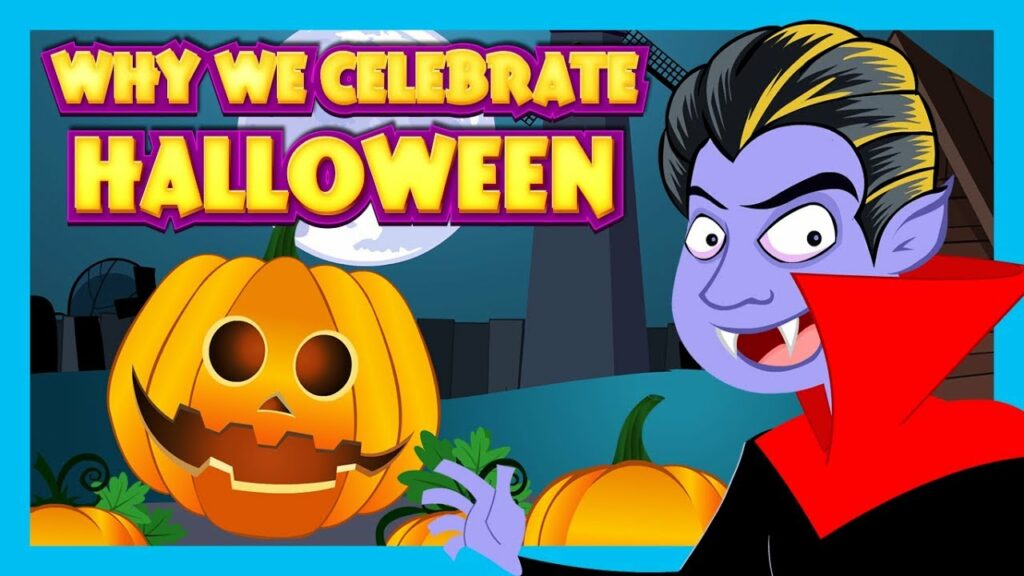Why Do We Celebrate Halloween?

There have been Halloween celebrations for over a thousand years. Originally a religious holiday, it gradually lost its religious overtones as it became more and more secular throughout the ages. Today, Halloween is seen as a fun occasion where people dress up, especially kids.
Also Read:- History of Halloween All You Need to Know about it
Samhain, an ancient Celtic holiday that was celebrated on November 1 in modern calendars, is where Halloween got its start. People dressed up in costumes and set bonfires on that day in an effort to fend off ghosts since it was thought that on that day, the souls of the deceased returned to their homes. As a result, well-known Halloween clichés like witches, ghosts, and goblins came to be associated with the occasion.
All Saints Day was established by Pope Boniface IV in the seventh century CE and was first observed on May 13. Pope Gregory III changed the holiday’s date to November 1 a century later, most likely as a Christian replacement for the pagan celebration of Samhain. All Hallows Eve, or Halloween, came to be known as the day before the holy celebration.
Despite having its roots in the Celtic regions of Ireland, the UK, and France, the festival swiftly expanded to other continents. Though it was somewhat popular in the Southern colonies, the original American colonists in New England were banned from celebrating it for religious reasons. By the 1800s, harvest festivals in the fall included elements of Halloween, and Irish immigrants fleeing the catastrophic Potato Famine brought many Halloween customs that are still practised today.
As Irish and Scottish communities revived the Old World tradition of “guising,” where a person would dress in costume and tell a joke, recite a poem, or do some other trick in exchange for a piece of fruit or other treat, trick-or-treating, in which children dress up in costumes and solicit treats from neighbours, became popular in the United States in the early 20th century. Trick-or-treating for sweets had become one of the most well-liked Halloween traditions by 1950. With yearly candy sales of more than $2.5 billion, Halloween is currently one of the most important festivals in the United States.
It’s time to deck out your porch with pumpkins, start carving them, and start thinking of Halloween snacks and costumes when the leaves begin to change orange and yellow, the temps begin to fall, and you begin to pull out sweaters and jackets. Trick-or-treating is just around the corner, and spooky fun and possibly some Halloween party games are in store. For adults, trick-or-treating may even be more thrilling as an excuse to sip on a boozy Halloween cocktail.
Do you ever wonder about Halloween’s beginnings and history amidst all the festivities? We can tell you who established it, what it means, and how it relates to a pagan celebration. The tradition of celebrating Halloween with witches and wizards dates back a very long time, and they play an important role in the origin of the event.
Halloween is usually celebrated on the last Saturday in October, but it was once known as All Hallows’ Eve and honoured saints in a similar way to the celebration of All Saints’ Day, which takes place on November 1 every year. Prior to the seventh century CE, All Hallow’s Eve originally fell on May 13; however, Pope Boniface IV decided to relocate it to the autumn, probably in an effort to balance the occasion with a religious celebration. All Hallows’ Eve was eventually abbreviated to Halloween, as it is known today.
And now for a tonne more interesting information about the celebration of Halloween on October 31.
Why Do We Celebrate Halloween on October 31?
Halloween occurs on October 31 because this date coincides with the historic Gaelic feast of Samhain, which is regarded as the origin of Halloween. Seasons changed at this critical time of year, but more significantly, observers thought the veil between this world and the hereafter was exceptionally thin at this time, allowing them to communicate with the dead. This belief is prevalent in various other cultures; a related concept is brought up during Yom Kippur, a Jewish holiday that falls in October and involves praying for the deceased. Halloween acquires its “haunted” connotation from this as well.
The Origins of Halloween Traditions
Due to the Celts’ polytheistic beliefs, the early pagan feast of Samhain comprised numerous ritualistic procedures to establish a connection with spirits. Although little is known about these celebrations, many people think the Celts ate special feasts, carved lanterns out of gourds (thus the origin of jack-o’-lanterns), and dressed up for the occasion (granted, costumes were probably as simple as animal hides). The fundamental festival customs persisted in popular culture year after year as Christianity spread and the pagan overtones of the celebration were diminished; they just changed and modernised.
The ancient esoteric rites gave way to more jovial fun and games. For instance, the more jovial concept of telling the future was used in place of the fairly serious concept of connecting to the dead. On All Hallows’ Eve, for instance, the game of “bob for apples” gained popularity as a form of fortune telling. Apples would be chosen to represent all of a woman’s suitors, and the guy—er, apple—she would ultimately bite into would be said to indicate her future husband. In fact, young ladies in the 19th century had a huge (though somewhat superstitious) opportunity to meet men on Halloween.
Mirror gazing was another common All Hallows Eve custom in which participants sought to see their future selves by gazing into a mirror. There are also claims that earlier times saw the distribution of favours resembling fortune cookies. The letters were folded and put into walnut shells after being written on pieces of paper in milk. The messages would magically emerge on the recipient’s paper after the shells were heated over a fire, turning the milk just the right shade of brown.
Halloween costumes and trick-or-treating history
It was rumoured that many people would dress up as saints and sing or read poetry door to door. Additionally, kids would knock on doors and ask for “soul cakes,” a dessert resembling biscuits. Technical note: Soul cakes were originally part of the All Souls’ Day holiday on November 2 (yeah, a third holiday! ), but as the idea developed into trick-or-treating, they finally became a part of Halloween night. In order to protect their kids from holiday pranks, families would give them treats in the early to mid-1900s, which helped popularise the candy-grabbing concept.
The costumes also changed throughout time. Although they started out as sincere homages to saints, that custom probably lost favour at some point. until young Scots and Irish pranksters thought to dress up in frightful attire once more as a ruse to frighten unaware neighbours. Suddenly, owing to these neighbourhood troublemakers, Halloween costumes were terrifying, eerie, humorous, and inventive all at once.








